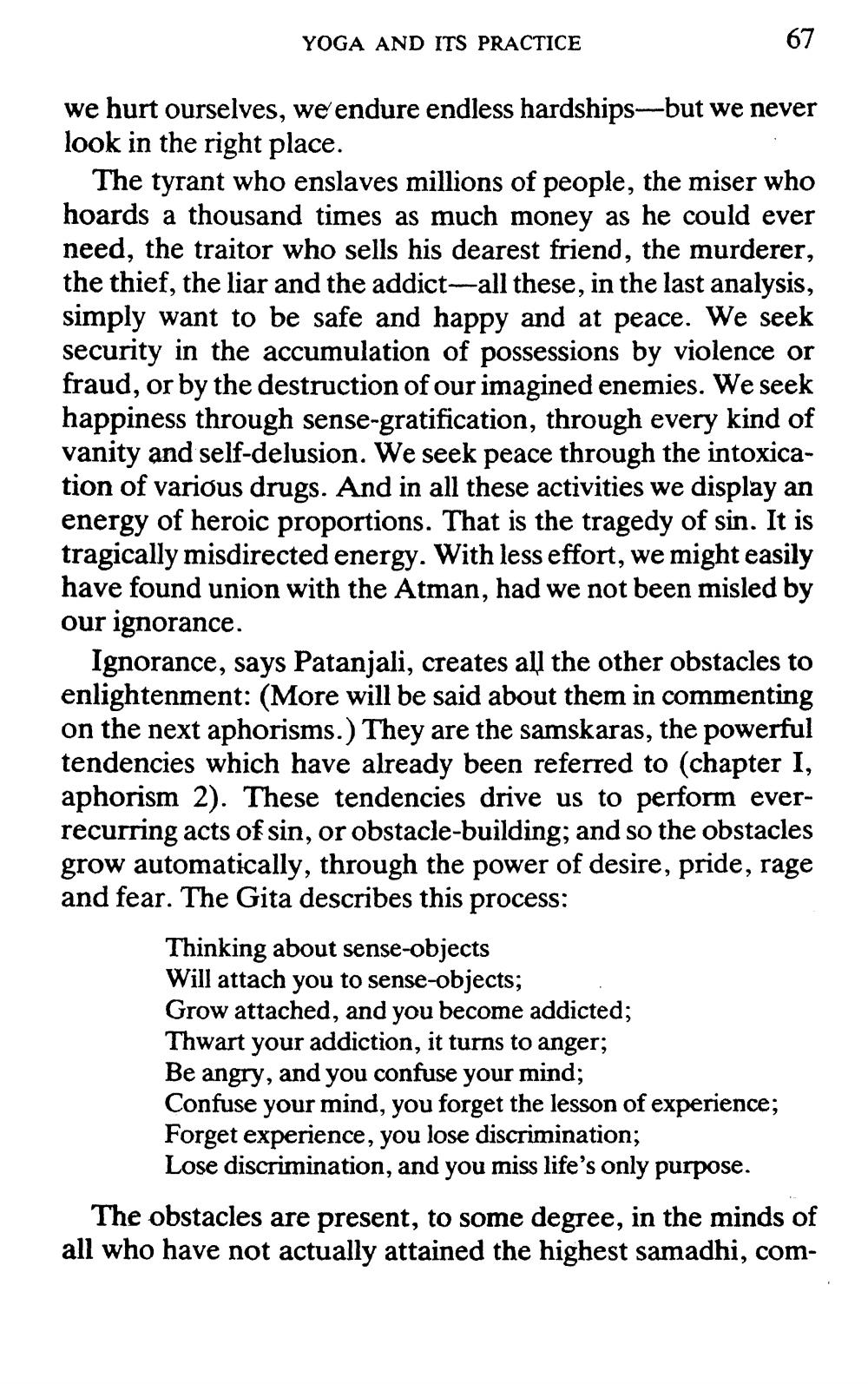________________
YOGA AND ITS PRACTICE
we hurt ourselves, we endure endless hardships--but we never look in the right place.
67
The tyrant who enslaves millions of people, the miser who hoards a thousand times as much money as he could ever need, the traitor who sells his dearest friend, the murderer, the thief, the liar and the addict-all these, in the last analysis, simply want to be safe and happy and at peace. We seek security in the accumulation of possessions by violence or fraud, or by the destruction of our imagined enemies. We seek happiness through sense-gratification, through every kind of vanity and self-delusion. We seek peace through the intoxication of various drugs. And in all these activities we display an energy of heroic proportions. That is the tragedy of sin. It is tragically misdirected energy. With less effort, we might easily have found union with the Atman, had we not been misled by our ignorance.
Ignorance, says Patanjali, creates all the other obstacles to enlightenment: (More will be said about them in commenting on the next aphorisms.) They are the samskaras, the powerful tendencies which have already been referred to (chapter I, aphorism 2). These tendencies drive us to perform everrecurring acts of sin, or obstacle-building; and so the obstacles grow automatically, through the power of desire, pride, rage and fear. The Gita describes this process:
Thinking about sense-objects
Will attach you to sense-objects;
Grow attached, and you become addicted; Thwart your addiction, it turns to anger; Be angry, and you confuse your mind;
Confuse your mind, you forget the lesson of experience; Forget experience, you lose discrimination;
Lose discrimination, and you miss life's only purpose.
The obstacles are present, to some degree, in the minds of all who have not actually attained the highest samadhi, com




